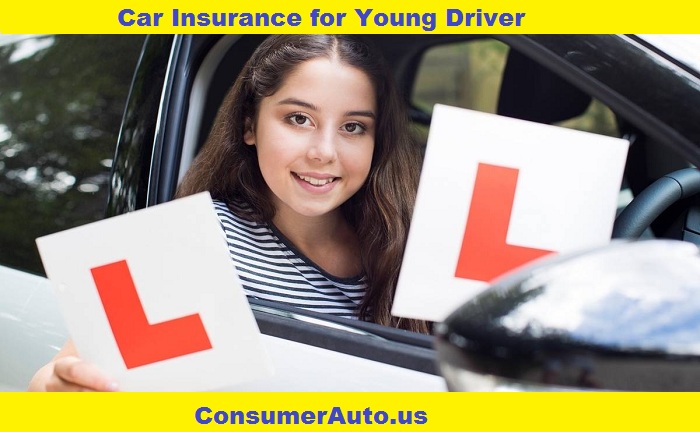Car insurance is an indispensable aspect of responsible driving, especially for young drivers. This comprehensive guide aims to delve into the nuances of car insurance for young individuals, who face unique challenges and higher risks on the road due to their limited experience. Whether you’re a parent seeking the best policy for your teenage driver or a young driver looking for affordable and reliable coverage, we are here to equip you with valuable insights to make informed decisions.
I. Factors Affecting Car Insurance for Young Drivers
Age and Experience:
Young drivers often encounter higher insurance premiums due to their perceived higher risk. However, age can work in their favor as insurance rates tend to decrease gradually over time with a clean driving record. It is vital to explore age-related discounts offered by insurance providers to maximize savings.
Driving Record:
Maintaining a clean driving record is crucial for young drivers to secure lower insurance premiums. Traffic violations and accidents can significantly impact insurance rates, making it imperative for young drivers to adopt safe driving habits and attend defensive driving courses.
Type of Vehicle:
The choice of vehicle can influence insurance premiums for young drivers. Factors such as safety features, repair costs, and theft rates play a role in determining insurance rates. Researching and comparing insurance rates for different vehicle types can help young drivers make the right choice.
II. Types of Car Insurance Coverage
Liability Insurance:
Liability insurance is essential for all drivers, including young ones. It covers bodily injury and property damage caused to others in accidents where the insured driver is at fault. Young drivers should consider higher liability limits to ensure comprehensive protection.
Comprehensive Insurance:
Comprehensive coverage provides protection against non-collision incidents such as theft, vandalism, and natural disasters. For young drivers, comprehensive coverage offers peace of mind, especially if their vehicle is valuable or prone to theft.
Collision Insurance:
Collision insurance covers damage to the insured vehicle in accidents involving collisions with other objects or vehicles. While not mandatory, young drivers should carefully assess their vehicle’s value and potential repair costs to determine appropriate coverage limits and deductibles.
Uninsured/Underinsured Motorist Coverage:
This type of coverage protects young drivers in situations where the at-fault driver doesn’t have insurance or carries insufficient coverage. It can be crucial in safeguarding young drivers from financial burdens caused by accidents involving uninsured or underinsured motorists.
Personal Injury Protection (PIP) Insurance:
PIP insurance covers medical expenses and, in some cases, lost wages for the insured driver and passengers after an accident, regardless of fault. For young drivers, PIP insurance can provide essential medical coverage, especially if they do not have health insurance or have limited coverage.
III. Tips to Lower Car Insurance Costs for Young Drivers
Good Student Discounts:
Maintaining good grades can lead to lower insurance premiums through good student discounts offered by many insurance providers. Young drivers should inquire about eligibility requirements to take advantage of this cost-saving opportunity.
Defensive Driving Courses:
Enrolling in recognized defensive driving courses can yield substantial benefits for young drivers. Completion of these courses demonstrates responsible driving behavior and can result in lower insurance premiums.
Bundling Policies:
Young drivers can save on insurance costs by bundling their car insurance with other insurance types, such as home or renter’s insurance. This bundling often leads to multi-policy discounts.
Usage-Based Insurance:
Usage-based insurance, also known as telematics-based insurance, relies on data from a device installed in the car to assess driving behavior. Young drivers with safe driving habits can potentially enjoy lower premiums with this type of coverage.
Increasing Deductibles:
Adjusting deductibles can impact insurance premiums. Young drivers can consider increasing deductibles to lower their premiums, but they must also be prepared for potential higher out-of-pocket costs in the event of an accident.
IV. Important Considerations for Young Drivers
Named Driver Policies vs. Own Policy:
Young drivers have the option of being named on a parent’s insurance policy or having their own coverage. Each option comes with its advantages and disadvantages, requiring careful consideration of individual needs and circumstances.
Parental Involvement in Car Insurance:
Parents play a crucial role in guiding young drivers through the complexities of car insurance. Joint policies and family insurance considerations can offer cost-effective solutions, but effective communication is essential in making well-informed decisions.
Shopping for Car Insurance:
Comparing insurance providers and policies is essential for young drivers to secure the best coverage at competitive rates. Understanding online quotes and discounts can assist in making informed choices.
V. Frequently Asked Questions (FAQs)
What is the average cost of car insurance for young drivers?
The average cost of car insurance for young drivers varies based on several factors, including age, location, driving record, and the type of vehicle. Young drivers can generally expect higher premiums due to their perceived higher risk, but exploring discounts and coverage options can lead to more competitive rates.
How does the type of car I drive impact insurance rates?
The type of vehicle you drive can significantly influence insurance rates. Factors such as safety features, value, repair costs, and theft rates are taken into account by insurance providers when calculating premiums.
Can I stay on my parents’ insurance policy after moving out?
The possibility of staying on your parents’ insurance policy after moving out depends on the policy’s terms and conditions. It is crucial to check with the insurance provider to understand their specific policies and any restrictions that may apply.
What discounts are available for young drivers?
Young drivers may be eligible for various discounts, including good student discounts, defensive driving course discounts, and multi-policy discounts. Inquiring with insurance providers about available discounts can lead to potential savings.
Will a speeding ticket affect my insurance premium?
Yes, a speeding ticket can impact your insurance premium. Traffic violations can lead to increased insurance costs, as they signal higher risk behavior to insurance companies.
Should I opt for minimum coverage or additional protection?
The decision between minimum coverage and additional protection depends on your individual circumstances. While minimum coverage meets state requirements, additional protection can offer greater security and peace of mind.
How can I lower my insurance premium if I have a poor driving record?
Improving your driving record over time, attending defensive driving courses, and exploring discounts can help lower insurance premiums despite a poor driving history. Safe driving practices are essential to demonstrate responsible behavior to insurers.
Is it cheaper to pay premiums monthly, semi-annually, or annually?
Paying premiums annually may offer some cost savings, as insurers often provide discounts for lump-sum payments. However, the frequency of premium payments may depend on your financial situation and the flexibility offered by the insurer.
What is usage-based insurance, and how does it work?
Usage-based insurance relies on data from a device installed in the car to assess driving behavior. Insurance premiums are calculated based on individual driving habits, rewarding safe driving with potentially lower premiums.
Are there special insurance programs for college students?
Some insurance providers offer special programs or discounts for college students, particularly if they maintain good grades or have limited driving frequency while living on campus.
VI. Conclusion
Car insurance for young drivers is a crucial aspect of responsible driving, and with the right approach, it can be manageable. By understanding the factors that influence insurance rates, exploring various coverage options, and adopting safe driving habits, young drivers can make informed decisions that protect them on the road while fitting their budget. Prioritizing safety, continuous learning, and exploring opportunities for the best insurance coverage possible are vital steps for young drivers embarking on a safer driving journey.
To help young drivers find the best car insurance coverage, we have crafted this comprehensive guide that covers all aspects related to car insurance for young individuals. From the factors affecting insurance rates to the various types of coverage available, we aim to provide detailed information that addresses the specific needs of young drivers.
Our guide starts by highlighting the factors that insurance providers consider when calculating premiums for young drivers. These factors include age, driving experience, and the type of vehicle driven. By understanding these influences, young drivers can take steps to secure lower insurance premiums, such as exploring age-related discounts and maintaining a clean driving record.
Next, we delve into the different types of car insurance coverage available to young drivers. We cover essential policies such as liability insurance, comprehensive insurance, collision insurance, uninsured/underinsured motorist coverage, and personal injury protection (PIP) insurance. By explaining the purpose and benefits of each coverage type, young drivers can make informed choices that align with their needs and budget.
We then offer practical tips to lower car insurance costs for young drivers. These tips include maintaining good grades to qualify for good student discounts, enrolling in defensive driving courses, bundling policies, considering usage-based insurance, and adjusting deductibles. By implementing these strategies, young drivers can maximize potential savings without compromising coverage.
Furthermore, we address important considerations for young drivers, such as the choice between being named on a parent’s insurance policy or having their own coverage. We emphasize the significance of parental involvement in the car insurance decision-making process and offer guidance on how to shop for car insurance effectively.
Lastly, we provide answers to frequently asked questions to address common concerns and uncertainties related to car insurance for young drivers. From average insurance costs to the impact of driving records on premiums, we strive to offer comprehensive information to empower young drivers to make well-informed choices.
In conclusion, our guide aims to equip young drivers with the knowledge and tools needed to find the best car insurance coverage. By understanding the factors affecting insurance rates, exploring various coverage options, and implementing cost-saving strategies, young drivers can embark on a safer driving journey with confidence. We believe that responsible driving starts with comprehensive car insurance, and our guide is here to support young drivers in making the right decisions for their protection on the road.







